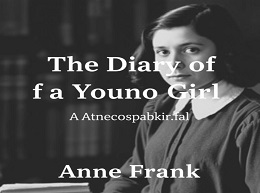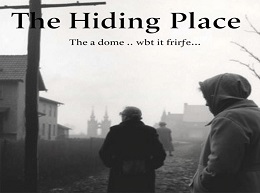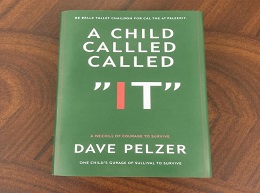The Diary of a Young Girl

A Deep Dive into "The Diary of a Young Girl" by Anne Frank
"The Diary of a Young Girl," written by Anne Frank, is an intimate and powerful account of life during one of history’s darkest periods. This diary, penned by a young Jewish girl in hiding during the Nazi occupation of the Netherlands, offers a unique perspective on the horrors of war, the resilience of the human spirit, and the enduring hope for a better world. In this detailed review, we will explore the key themes, narrative style, historical context, and lasting impact of Anne Frank’s diary.
A Brief Biography
Anne Frank was born on June 12, 1929, in Frankfurt, Germany. As the Nazi regime gained power, the Frank family relocated to Amsterdam in 1933 to escape persecution. In July 1942, as anti-Jewish measures intensified, Anne, her family, and four others went into hiding in a secret annex behind her father’s business premises. For over two years, Anne documented her life in the annex, reflecting on her thoughts, fears, and aspirations until their hiding place was betrayed in August 1944.
The Diary’s Publication and Reception
After the war, Anne’s father, Otto Frank, the sole survivor of the family, discovered her diary and decided to fulfill her wish of becoming a published writer. The diary was first published in 1947 under the title "Het Achterhuis" (The Secret Annex). Since then, it has been translated into numerous languages and remains a seminal work in Holocaust literature.
The Horrors of War and Persecution
Anne Frank’s diary vividly captures the constant fear and danger faced by Jews during the Nazi occupation. Her entries detail the oppressive restrictions imposed on Jews, the scarcity of food, and the ever-present threat of discovery.
Example: Life in the Annex
Anne describes the constant need for silence, the blackout curtains, and the fear of being overheard by the workers in the warehouse below. Her acute observations provide a stark picture of the precariousness of their situation and the lengths to which they had to go to remain undetected.
The Resilience of the Human Spirit
Despite the dire circumstances, Anne’s writings reflect an unyielding spirit and a profound sense of hope. Her diary reveals a young girl who, despite the horrors surrounding her, clings to her dreams and aspirations.
Example: Anne’s Optimism
One of the most poignant aspects of Anne’s diary is her unwavering belief in the goodness of people. In an entry dated July 15, 1944, she writes, “In spite of everything, I still believe that people are really good at heart.” This enduring optimism in the face of unimaginable adversity is a testament to her resilience and faith in humanity.
The Journey of Self-Discovery
Anne’s diary is also a deeply personal account of her journey of self-discovery. Through her writings, we witness her growth from a spirited and outspoken girl into a reflective and insightful young woman.
Example: Reflections on Identity
Anne grapples with typical adolescent issues, such as identity and self-worth, against the backdrop of extraordinary circumstances. Her introspective entries reveal her thoughts on friendship, love, and her ambitions as a writer, providing a rich and nuanced portrait of her inner life.
A Unique Voice
Anne’s voice in the diary is unmistakably authentic, characterized by its honesty, wit, and perceptiveness. Her ability to articulate her thoughts and emotions with clarity and depth is remarkable for someone so young.
Example: Descriptive Language
Anne’s descriptions of the annex, her companions, and the events that transpire are vivid and engaging. Her writing is infused with a keen observational eye and a narrative flair that draws the reader into her world.
Literary Techniques
Anne employs various literary techniques that enhance the impact of her diary. Her use of metaphors, similes, and detailed descriptions brings her experiences to life, while her introspective passages provide profound insights into her character.
Example: The Use of Metaphor
Anne often uses metaphors to express her feelings and observations. For instance, she refers to the annex as a "crazy house" and describes her emotions as a "roller coaster," effectively conveying the turbulence and confinement of her life in hiding.
A Window into the Holocaust
"The Diary of a Young Girl" serves as a crucial historical document, providing a personal perspective on the Holocaust. Through Anne’s eyes, readers gain an understanding of the daily realities faced by Jews under Nazi occupation, as well as the broader context of World War II.
Example: The Impact of Anti-Jewish Measures
Anne’s diary entries detail the escalating anti-Jewish measures, such as wearing the yellow star, being banned from public places, and the eventual need to go into hiding. These personal accounts bring to life the abstract statistics and historical facts, making the horrors of the Holocaust more tangible and relatable.
Influence on Holocaust Literature and Education
Anne Frank’s diary has had a profound impact on Holocaust literature and education. It has been widely used in schools around the world to teach students about the Holocaust, human rights, and the importance of tolerance and empathy.
Example: Educational Programs
The Anne Frank House in Amsterdam and various educational programs worldwide use her diary as a tool to promote understanding and combat prejudice. The diary’s accessibility and emotional resonance make it an effective means of conveying the lessons of history to younger generations.
A Symbol of Hope and Humanity
Anne Frank’s diary has transcended its historical context to become a universal symbol of hope, resilience, and the enduring human spirit. Her reflections on life, love, and the future continue to inspire readers of all ages.
Example: Inspirational Quotes
Anne’s diary is filled with quotes that resonate with readers on a deeply personal level. Phrases like “How wonderful it is that nobody need wait a single moment before starting to improve the world” continue to inspire and motivate individuals to strive for a better world.
Adaptations and Cultural Impact
The diary has inspired numerous adaptations, including plays, films, and documentaries, further cementing its place in popular culture and ensuring that Anne’s story reaches a broad audience.
Example: Stage and Screen Adaptations
The play "The Diary of Anne Frank," first performed in 1955, and subsequent film adaptations have brought her story to life for audiences around the world, highlighting the universal themes of her experiences and the timeless relevance of her message.
The Timeless Relevance of Anne Frank’s Diary
"The Diary of a Young Girl" by Anne Frank remains a powerful and poignant testament to the resilience of the human spirit in the face of unimaginable adversity. Through her candid and insightful reflections, Anne Frank provides a deeply personal account of life during the Holocaust, offering readers a unique window into this dark chapter of history. Her enduring optimism, introspective wisdom, and remarkable narrative voice continue to inspire and resonate with readers around the world.
By documenting her experiences, Anne Frank not only fulfilled her dream of becoming a writer but also left a lasting legacy that serves as a reminder of the importance of hope, tolerance, and the enduring power of the human spirit. Her diary stands as a timeless and universal testament to the strength and resilience of the human spirit, ensuring that her voice continues to be heard and remembered for generations to come.












